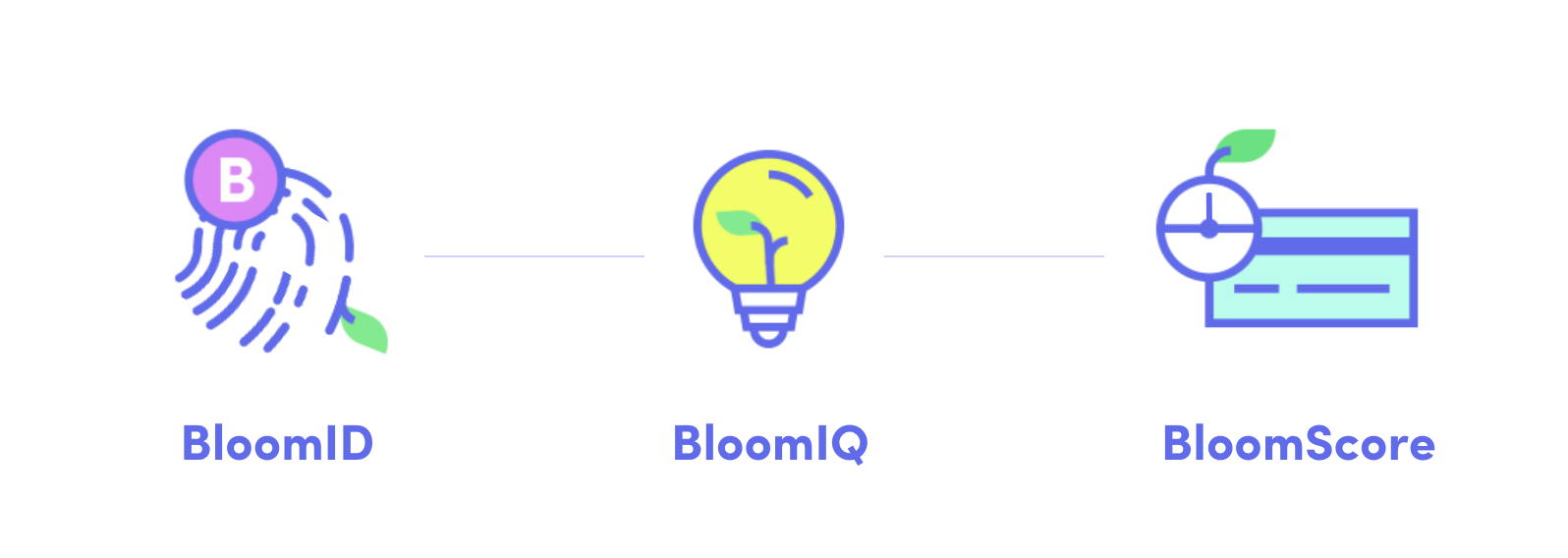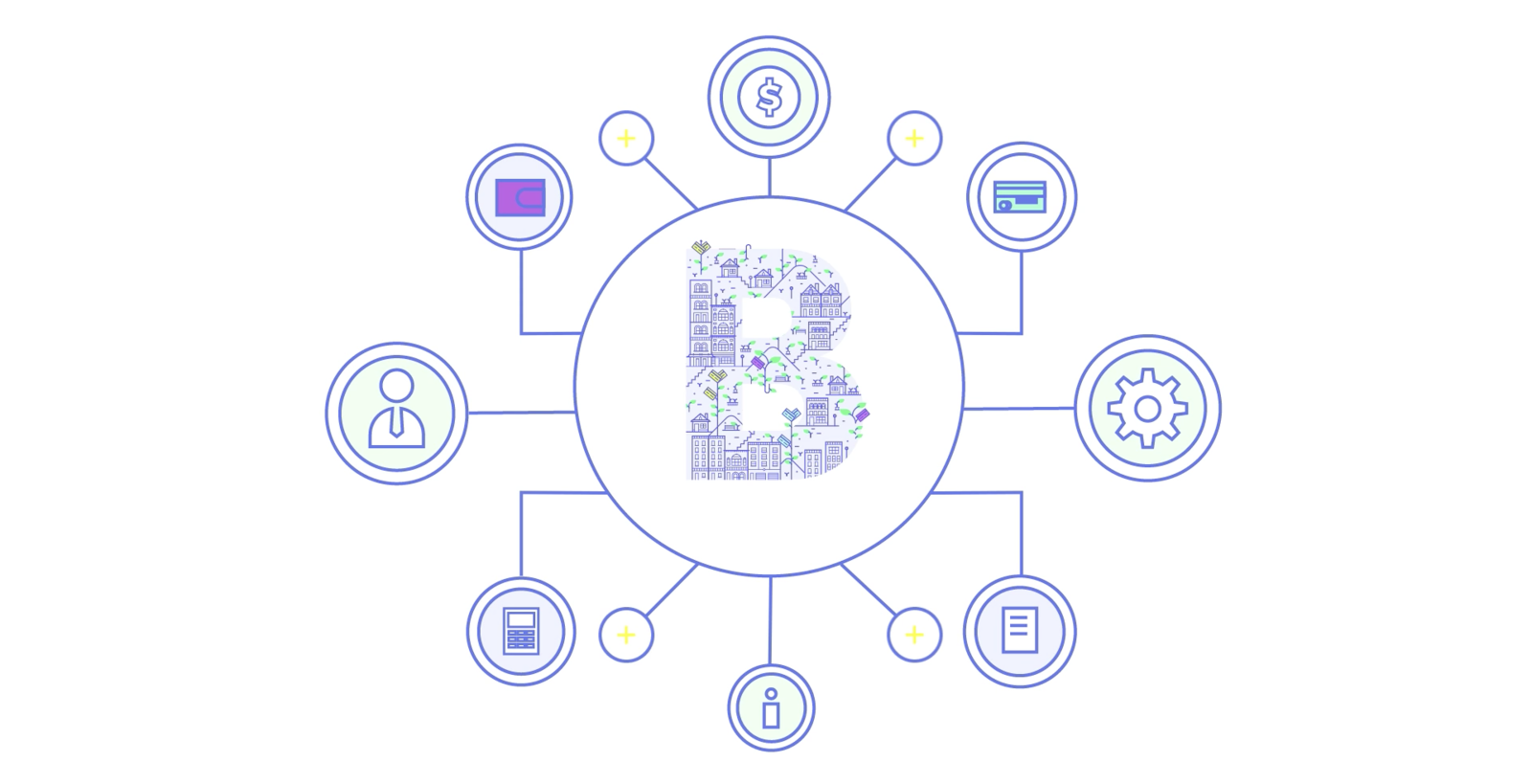Building Applications on Bloom Protocol: The 3 Key Components

Bloom is not a lender. Bloom is a protocol.
This means that both traditional applications and blockchain-based dApps can build on top of Bloom to enhance their applications.
In the traditional world, credit scores have a number of uses outside of lending. In the decentralized world, the need is even more prevalent. The possibilities of leveraging Bloom expand well beyond lending into industries like insurance, employment, and tenancy much like a traditional credit score. However, we wanted to highlight some of the use cases enabled by all of the parts of the protocol.
Some novel uses of the Bloom Protocol
BloomID allows businesses to verify and associate any part of identity. This offers a number of opportunities to expand on.This makes it generalizable for different use cases.
- Sybil Resistance: A marketplace could use BloomID to prevent an individual from registering multiple accounts.
- Single Attestation Verification — If a dApp wanted to confirm that someone owns a Facebook account, then a Bloom user could allow that verification request.
- Decentralized Reputation: In the traditional world, reputation is tied to your identity. In the decentralized world, it’s much more difficult to associate reputation with an individual. BloomID further makes this possible.
- Scam Prevention: A decentralized protocol might require that all users have a BloomID before being allowed to join a Slack community, an online forum, or even social networks.
- On-Time Payments: A number of businesses that do not issue loans will still want to review credit history to ensure that their users will pay on-time. A user can authorize a dApp to access this information as part of BloomIQ
Expanding on The Status Quo:
Bloom reinvents the credit infrastructure. While Bloom offers a number of improvements, the traditional infrastructure contains a wealth of valuable information, which Bloom leverages.
- Traditional Information Requests: BloomIQ maps offline information to the blockchain. A decentralized provider may want to ensure that a user has a few years of payment history. BloomIQ allows the user to authorize the metadata about this information to a dApp without exposing personal information.
- Transitioning to a Blockchain-First world: BloomIQ and BloomScore are designed to both expand on and enhance information stored in traditional silos. While decentralized has advantages, the traditional world has a wealth of historical information. Bloom makes it easy for this information to exist on the blockchain.
- Federated Identities: BloomID lets users establish a global, federated identity with independent third parties who publicly vouch for their identity information, legal status and creditworthiness.

Protocol Components There are three main systems which comprise the Bloom protocol:
- BloomID creates a global secure identity, allowing lenders to offer compliant loans globally, without forcing borrowers to expose personal information.
- BloomIQ (Credit Registry): BloomIQ is a system for reporting and tracking current and historical debt obligations that are tied to a user’s BloomID.
- BloomScore (Credit Scoring): The BloomScore is a metric of consumers’ creditworthiness. This decentralized score is similar to FICO or VantageScore score, but with updated models.
BloomID — A Secure, Reusable Blockchain Identity

BloomID is an attestation-based global identity.
BloomID works across borders, and adapts to information that is available on a given user.
BloomID lets users establish a global, federated identity with independent third parties who publicly vouch for their identity information, legal status and traits. These third parties can be friends, family or peers who vouch for a user’s identity and/or creditworthiness (“peer-to-peer staking”) or organizations who earn revenue by evaluating a user’s credentials (“organizational staking”).
Organizational stakers can either inherit trust from their existing reputation (such as existing credit bureaus and identity companies who publicly announce which attestation contracts they control) or by establishing a track record of successful identity attestations on the network.
Reusable Identity Verification
By publishing all historical identity attestations on the blockchain, organizations can help take part in building a reusable identity that builds up trust over time rather than having to be re-evaluated for every transaction with a new lender. This can not only save money across the network of lenders, but it can also help significantly reduce on-boarding time by reducing duplicate work by anti-fraud and compliance teams across lending organizations.
BloomIQ — A Decentralized Reputation Tracking System

BloomIQ, A Registry for Reporting and Tracking Historical Credit BloomIQ is a system for reporting and tracking current and historical debt obligations that are tied to a user’s BloomID.
BloomIQ’s tracking mechanism puts the user in control, requiring each instance of payment data released to a 3rd party to be authorized by the user. One of the primary goals of BloomIQ is to allow a user to import existing credit history to this decentralized system, reducing the need for credit-established users to build up their credit quickly.
BloomScore — A Global, Fair Credit Score

BloomScore is a dynamic indicator of an individual’s likelihood to pay debts that adapts to the maturity of a user’s credit history (or lack thereof). By splitting a user’s credit scoring mechanism into three phases that each take into account different data points with varying weights, BloomScore can produce a score that is conducive to building credit from the ground up while helping creditors differentiate the credit risk of consumers in markets and communities with sparse data.
BloomScore initially relies on peer-to-peer credit stakes from BloomID as a means of bootstrapping trust and eventually transitions to primarily using the user’s own spending habits and credit activity as a proxy for creditworthiness. Organizational stakers with an established presence can vouch for users with strong credit under the current system allowing them to transition their existing history and reputation to the Bloom network.

